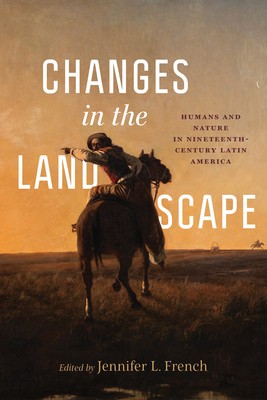
- We will send in 10–14 business days.
- Publisher: Vanderbilt University Press
- ISBN-10: 0826507468
- ISBN-13: 9780826507464
- Format: 15.2 x 22.9 x 1.9 cm, kieti viršeliai
- Language: English
- SAVE -10% with code: EXTRA
Changes in the Landscape (e-book) (used book) | bookbook.eu
Reviews
Description
Changes in the Landscape is a collection of timely essays that bring the methodologies and commitments of ecocriticism to bear on the study of Latin American literature and cultural production. The book's eleven chapters, written by some of the leading voices in the field, invite readers to consider how the relationship between humans and nonhuman nature was fundamentally transformed during a period when new modes of capitalist production were emerging in the region and around the world. Jennifer L. French's introductory essay provides a historical and theoretical framework for the collection. Ranging from the immediate aftermath of the Spanish-American Wars of Independence (1810-1826) to the early twentieth century (1925), the volume's essays cover a wide variety of genres and forms of cultural production, from José Hernández's epic poem MartÃÂn Fierro to prose fiction, painting and photography, and the personal albums compiled by Spanish-American women. Individually and collectively, the essays engage with scientific writing as both a discourse of power and a source of potentially significant, even revelatory information about human and nonhuman nature. Changes in the Landscape enables readers to more fully understand the transition from colonial regimes to the ecocidal extractivism of the export boom (1870-1930) by drawing out and analyzing some of the cognitive resources and rhetorical strategies that were available to imagine, protest, or enact new norms and expectations regarding the relations between human and nonhuman life, be it the life of wildflowers, waterfalls, or Cuba's Ciénaga de Zapata.EXTRA 10 % discount with code: EXTRA
The promotion ends in 24d.05:31:01
The discount code is valid when purchasing from 10 €. Discounts do not stack.
- Publisher: Vanderbilt University Press
- ISBN-10: 0826507468
- ISBN-13: 9780826507464
- Format: 15.2 x 22.9 x 1.9 cm, kieti viršeliai
- Language: English English


Reviews